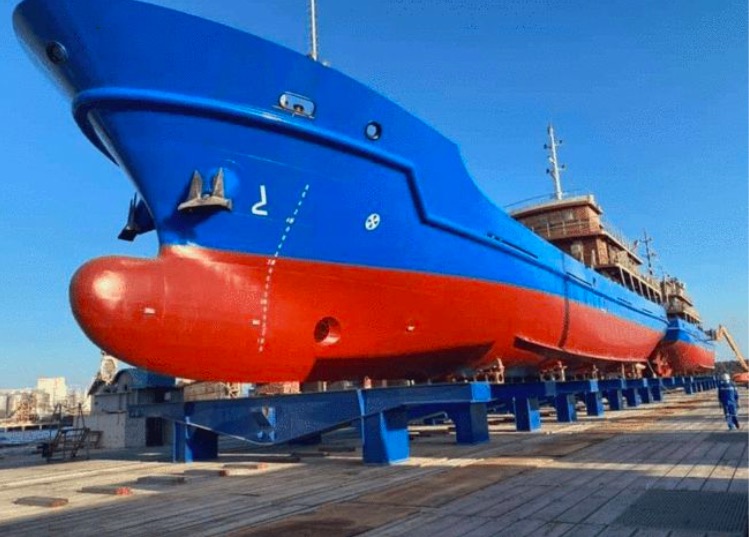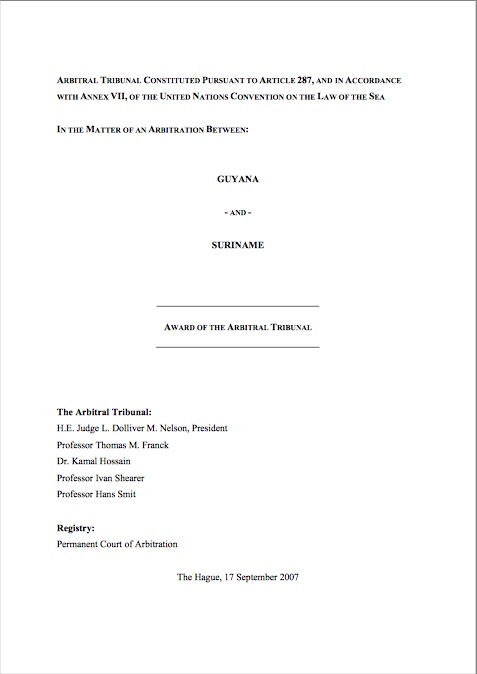It has been recently reported that the 400-ton armed fishing vessel TK 1482 ordered by the Vietnamese militia is about to be launched. The armed fishing vessel TK 1482 is expected to carry “the large caliber heavy machine gun of the NSV”.

400-ton armed fishing vessel TK 1482 Source:docbao24honline
It is not unusual that militia could be equipped with military weapons to support or replace regular military forces in warfare. While in peacetime, this practice is very rare. As a paramilitary unit, nothing in international law prevents Vietnam to equip the militia vessels with military weapons. However, the use of those heavy weapons may blur the lines between private use, law enforcement activities and the use of such weapons in hostilities. It is likely to escalate the conflicts and thus threat the peace and stability of this region. Meanwhile, the presence of deadly weapons on militia vessels would bring significant risk to the safety of the personnel and the vessels of law enforcement authorities.
Ⅰ. The “Double-Hat” of the Vietnamese Maritime Militia
Pursuant to Vietnam’s 2019 Law on Militia and Self-Defense Force, the Vietnamese maritime militia is part of Vietnam’s armed forces, and “do not escape production and work.” It is deployed to assist the regular military units and the law enforcement authorities to fulfil national interest missions, such as “to protect national sovereignty and border security, islands, waters and back zones of Vietnam”, and other law enforcement activities, such as combating crime, search and rescue, environmental protection, etc.. As the Spokesman of the Ministry of Foreign Affairs mentioned, “safeguarding the country’s maritime sovereignty and maintaining security, order, and safety on seas and islands”. Thus, the private hands of Vietnamese maritime militia are authorized to hold some public functions, like law enforcement and military operations. The “double-hat” might blur the line between the private activities and the public functions.
According to the relevant report, the TK-1482 class militia vessels are equipped with weapons including “the large caliber heavy machine gun of the NSV” and have reinforced bows and steel hulls. It is more akin to “professional” militia vessels that “rarely get to fish” but focus on “safeguarding the country’s maritime sovereignty and maintaining security, order, and safety on seas and islands.” However, it still cannot be taken as the warships and other government ships operated for non-commercial purposes unconditionally. Many commentators have indicated the challenges brought by defining the militia vessels as “other government ships operated for non-commercial purposes” due to their fluid and hybrid nature.
II. The Unclear Nature of the Use of Weapons and the Dilemma of Making Decisions for Response
The hybrid nature of the maritime militia has implications for the identification of the legal status of its activities, especially when the weapons on the vessels are used. In practice, it is difficult to identify whether the use of weapons by maritime militia took place in the context of conduct for private ends, law enforcement activities or military operations. The jurisprudence of the international adjudication on the distinction between military operations and law enforcement activities may shed light on this issue.
In the Case concerning the Detention of Three Ukrainian Naval Vessels (Ukraine v. Russia Federation), ITLOS has indicated in its Order on the prescription of provisional measures that the nature of the vessels is relevant, however, the characterization of the activities “cannot be based solely on” the nature of the vessels, but “must be based primarily on an objective evaluation of the nature of the activities in question, taking into account the relevant circumstances in each case”. It is obvious that the nature of the militia vessels is not always decisive for determining the nature of its activities. The nature of the activities would be more relied on the conducts of the vessels, taking all the relevant circumstances into account. However, hardly can the decision-makers on the vessels get all relevant information and make such “objective evaluation” at first glance.
Things are getting more complicated in the disputed waters. It is likely that the use of weapons against the vessels under the flag of another party to the dispute would be categorized as the use of weapons in the context of hostilities rather than law enforcement activities. In the Guyana/Suriname case, the arbitral tribunal has determined that the use of force by the Surinamese Coast Guard in precluding the CGX in the disputed area “seemed more akin to a threat of military action rather than a mere law enforcement activity.” The use of force in the disputed waters is rather sensitive, and if the well-equipped militia use the heavy weapons against the vessels under the flag of another party to the dispute, it would be extremely challenging and complicated.

Case Concerning the Detention of Three Ukrainian Naval Vessels
Thus, the unclear nature of the use of weapons on militia vessels would place those decision-makers and commanders of other coastal states into a dilemma of deciding how to respond to their activities, especially whether to escalate in response. If the use of weapons on militia vessels could be categorized as use of force against law enforcement or conduct for private ends, it is not appropriate for those authorities to take no action in response. However, if the use of weapons would be characterized as assisting the Vietnam’s regular law enforcement authorities and navy vessels, escalating violence as a response would exaggerate the situation, or could even trigger an international armed conflict in this region.
III. The Possible Maritime Security and Safety Problems in the Region
The use of weapons on the well-equipped militia vessels would entail the risk of causing significant harm to regional security and stability. It is obvious that the unclear characteristics of the use of weapons would bring some troubles for determination of the response measures, and thus lead to the misjudgment of the situation and trigger the escalation of the conflict. Further, although maritime militia are supposed to have military training, they do not compare to the regular forces, especially in dealing with those emergencies. It is a great challenge to the conflict management mechanism in this region.
Moreover, the heavy weapons on militia vessels would be a threat to the safety of other vessels, including the personnel on those vessels. In the South China Sea, there are some incidents between Vietnamese fishing vessels and other coastal states’ law enforcement vessels every year. From the pictures released, those well-equipped militia vessels are same as other normal fishing vessels from their appearance. It would be very dangerous to the safety of the personnel on law enforcement vessels, because they are not aware of the possibility of the use of weapons from those vessels. Once they realize the vessels are equipped with heavy weapons, the law enforcement activities would be escalated to all the fishing vessels, no matter whether they are equipped or not.
Last but not least, it is possible that militia weapons could be deployed for private ends, which would be a great challenge to the maritime security of the South China Sea.
In general, it is the coastal states’ right to choose whether or not to establish maritime militias and whether or not to deploy heavy military weapons. However, considering the hybrid nature of a maritime militia, a coastal state should be cautious if it decides to deploy heavy weapons on the militia vessels in peacetime.
Since the 1990s, all the claimants in the South China Sea have kept restraints on using force towards other parties. Over that time, although separated by territorial and maritime disputes, the ASEAN member states and China cherished the general peace of the region. Obviously, the militia vessels with heavy weapons will run in the opposite direction of that goal, which may even end the peace in the South China Sea. The maintenance of the peace and stability of the South China Sea needs the joint efforts of all the coastal states to restraint their conducts, manage the conflicts and promote practical cooperation.

